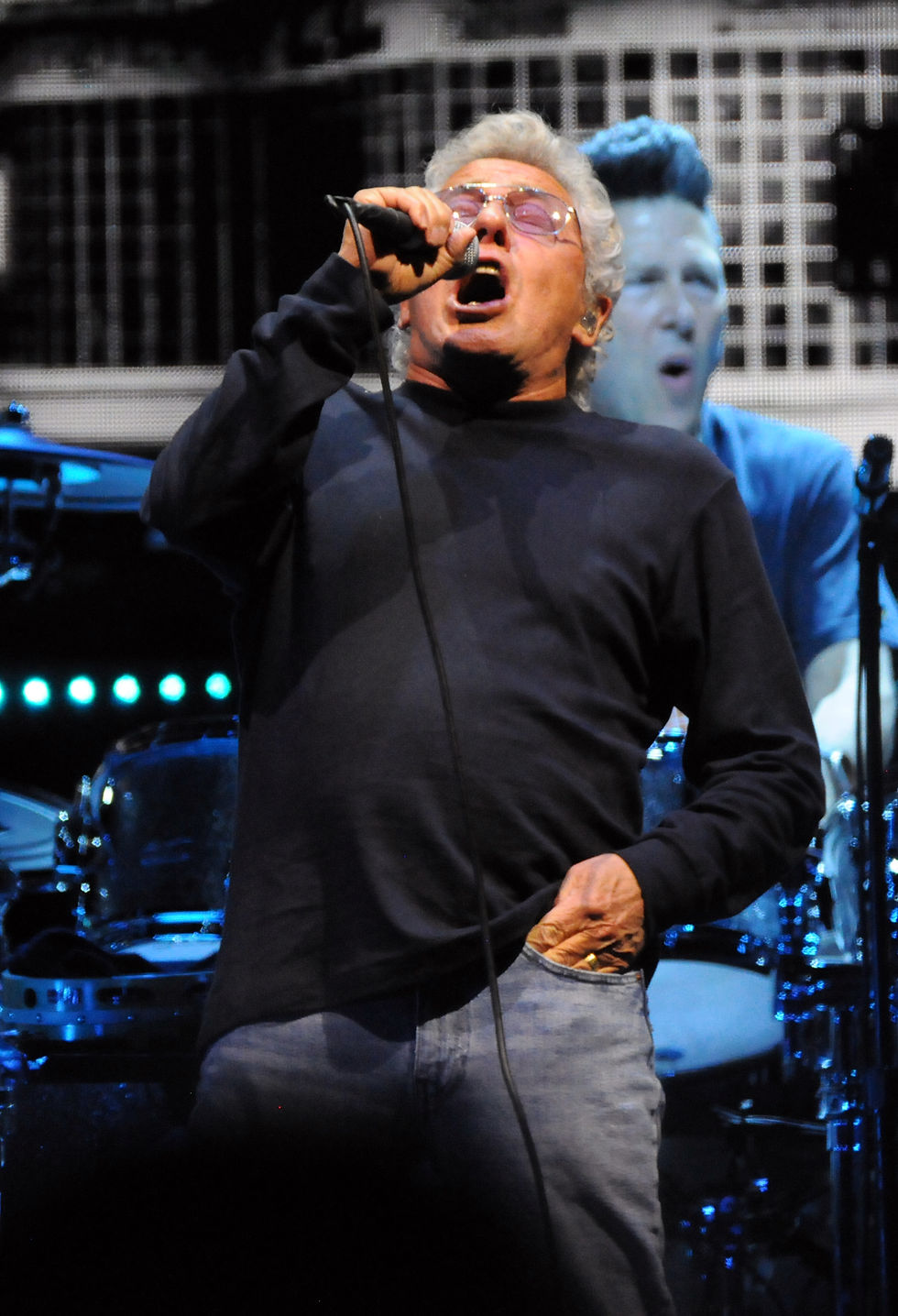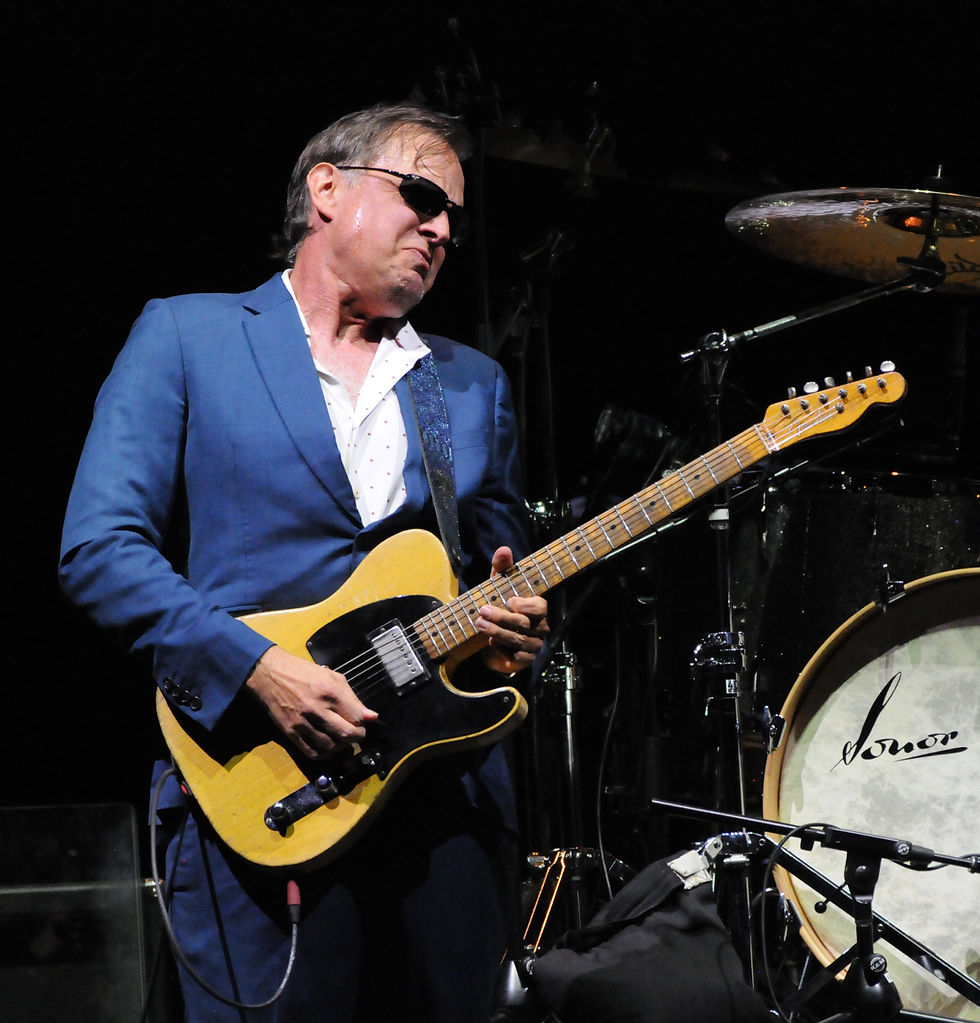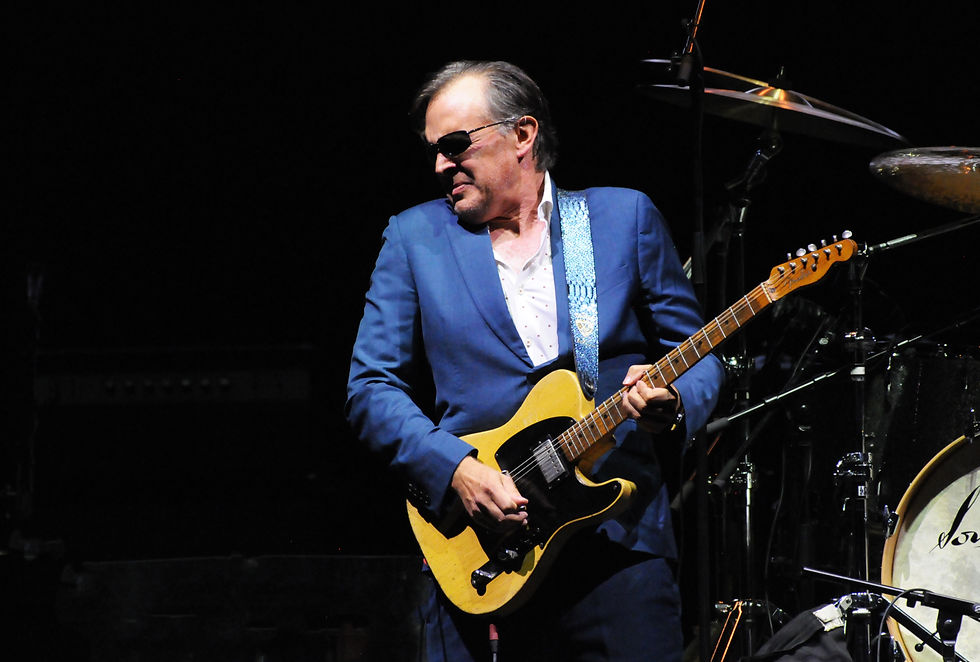The Who & Joe Bonamassa – United Center, Chicago, Sept. 7, 2025
- chicagoblueseditor
- Sep 19
- 5 min read
Review & Photos: Jim Summaria

The Who & Joe Bonamassa at the United Center in Chicago
September 7, 2025
Review & Photos: By Jim Summaria
The Who, led by guitarist/songwriter Pete Townshend and vocalist Roger Daltrey, performed in Chicago at the United Center, September 7th, on their North American Farewell Tour. The Who have said adieu before but this most likely is the last time they will play as the band.
The two octogenarians gave it their all at this show and were backed by a stellar band. They played the hits, with the crowd devouring every delicious minute of the concert. There were a few technical problems here and there but the guys rocked on. The concert had an amazing back-screened media production highlighting the band’s career.

Roger Daltrey began his musical journey in 1959 with his band called the Detours. Soon he approached his school friend’s bassist John Entwistle and Pete Townshend to join. A few years later, a brash young drummer by the name of Keith Moon saw the band at a show and told them during their set that he was a better drummer than who they had playing. After an audition they all agreed and the classic lineup of the Who was formed. They soon would be headed to America as part of the British Invasion. One of their first gigs in the states was at the Cellar music club in Arlington Hts., Ill., in the summer of 1967.
The Who is considered one of the most influential and creative rock groups in history. Their live shows were energetic, powerful and awe inspiring. Early in their career they were known for destroying their instruments, especially Townshend, who would smash his guitar to pieces. Moon would usually follow suit and, in 1967 on the Smothers Brothers Comedy Hour, he placed explosives in his bass drum, unbeknownst to the others in the band. At the climax of "My Generation" the blast was so loud it caused hearing damage in Townshend for the rest of his life.
They played the Monterey Pop Festival in 1967 and the Woodstock Festival in 1969, with a set that started at 5 a.m. The Who appeared at the Isle of Wight Festivals in 1969 and 1970. They were inducted into the Rock and Roll Hall of Fame in 1990 and were celebrated at the Kennedy Center Honors in 2008.
Their 1969 innovative and ambitious rock opera album Tommy changed rock music forever by creating cohesive storytelling . It was the first concept album and influenced many bands like Pink Floyd, Yes and Genesis. Rock albums changed and were no longer singles factories. In 1973, the Who repeated their concept album success with Quadrophenia. In between those albums their 1971 album Who's Next is considered one of the best rock albums of all time.

The current touring band for the Chicago show consisted of exceptional musicians: Pete's brother Simon Townshend (guitar and backing vocals), Loren Gold (keyboards and backing vocals), Jon Button (bass and backing vocals), Scott Devours (drums), John Hogg (percussion and backing vocals), Jody Linscott (percussion) and Katie Jacoby (violin).
Pete Townshend's guitar playing was excellent throughout the night. During "Who Are You" his red Stratocaster guitar had problems cutting in and out and he tossed it aside for a gold one. That was the closest he came to breaking an instrument.

Daltrey's voice was strong and he hit several tough notes ("Won't Get Fooled Again"). He also had a few difficulties with the sound in his ear piece. But being the pros that they are, they proceeded with an excellent show.
Townshend at one point let the audience know that he loves Chicago, which was met with wild applause. He joked about the city having a lot of Irish and then let on that he was half Irish, again met with loud applause and laughter.
Townshend told a story about playing early in their career at the Kinetic Playground in Chicago, where they shared the bill with legendary drummer Buddy Rich. Rich and Moon had a long chat after the show, and Rich praised his drumming, much to the elation of Moon. Daltrey added "there'll never be another (like him)" and then laughed, "thank goodness."
Concerts by legends such as the Who always have sing-alongs and this was no different. The crowd was really into the concert and knew the words to just about every song. Despite the technical difficulties, Townshend and Daltrey had a good time and it showed.

The set list consisted of some early singles: "I Can't Explain," "Substitute," "The Seeker" and "My Generation," from the albums Tommy (1969) "Pinball Wizard" and "See Me, Feel Me," from Who's Next (1971) "Behind Blue Eyes," "Going Mobile," "Won't Get Fooled Again ," "Baba O'Riley," "The Song Is Over" and "Love Ain't for Keepin'," from Quadrophenia (1973) "The Real Me," "I'm One," "5:15," and "Love, Reign O'er Me," from Odds & Sods (1974) "Long Live Rock," from Who Are You (1978) "Who Are You," from Face Dances (1981) "You Better You Bet," from It's Hard (1982) "Eminence Front" and "Cry If You Want." Pete and Roger sat alone on the stage for the last song "Tea & Theatre," from their Endless Wire concept album (2006). The song reflects on their long storied career, the aging process and a salute to Entwistle and Moon. The band has left an enduring mark on music and their music will be listened to for generations to come.

The Who have had outstanding supporting acts throughout this tour and the Chicago show was no different. Guitarist extraordinaire Joe Bonamassa opened the show with his usual blues rock brilliance. He took the stage to the Bar-Kays "Soul Finger" which immediately got the crowd revved up. Bonamassa looked cool in his blue suit and sunglasses but his performance was hot. He was backed by a stellar band: keyboardist Reese Wynans, drummer Lamar Carter, bassist Calvin Turner, rhythm guitarist Josh Smith and backup singers Jade MacRae and Dannielle De Andrea.
His brief set included his new single "Hope You Realize It (Goodbye Again)" -- a very upbeat funky sounding song reminiscent of the Tower of Power. Calvin Turner thumped his bass to complement Bonamassa's vocal and blistering guitar work. His version of Bobby "Blue" Bland's slow blues song "Twenty‐Four Hour Blues," was an incredible display of guitar virtuosity. Keyboardist Reese Wynans (Stevie Ray Vaughan’s bandmate) added the right amount of texture to the song.

The soulful "Heart That Never Waits," had Wynans eloquently tickling the ivories with the backup vocalists singing like angels. Again Bonamassa's guitar break left many in the crowd astonished. A strong version of "Self-Inflicted Wounds" featured backup singer Jade MacRae, who turned in a vocal solo that chilled the spine.
Bonamassa closed with his masterpiece anthem "Mountain Time." The song was near perfection. Joe's raspy vocal was heartfelt and his guitar soared to the heavens. A highly deserved standing ovation was granted to this one-time child prodigy who keeps blues rock alive with his inventive and incredible talent.

###
Jim Summaria began professionally photographing rock concerts in 1973 at the age of 19 when he became the staff photographer for the Chicago rock concert promoter Flip Side Productions. Jim's photos have been published in numerous books, magazines and CDs. His rock ‘n’ roll photos have been viewed at the Rock & Roll Hall of Fame, the Illinois Rock & Roll Museum and Hall of Fame on Rt.66 and the Grammy Awards. Jim and writer Mark Plotnick co-authored the books Classic Rock: Photographs From Yesterday & Today and the October 2024 release ‘70s Chicagoland Rock Concerts. Jim and Mark also co-host the radio podcast That Rock Show on the Illinois Rock & Roll Museum platform.
###



